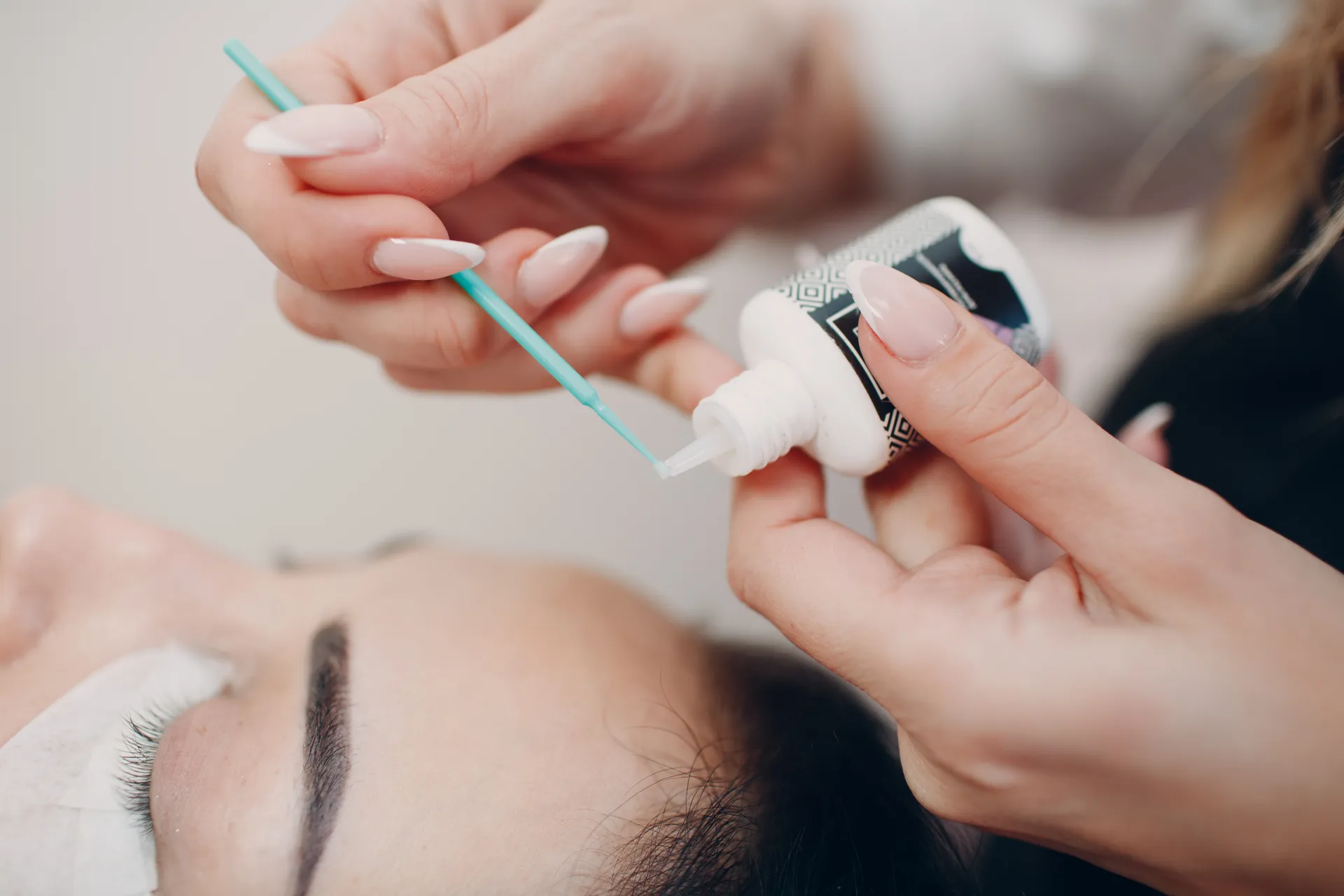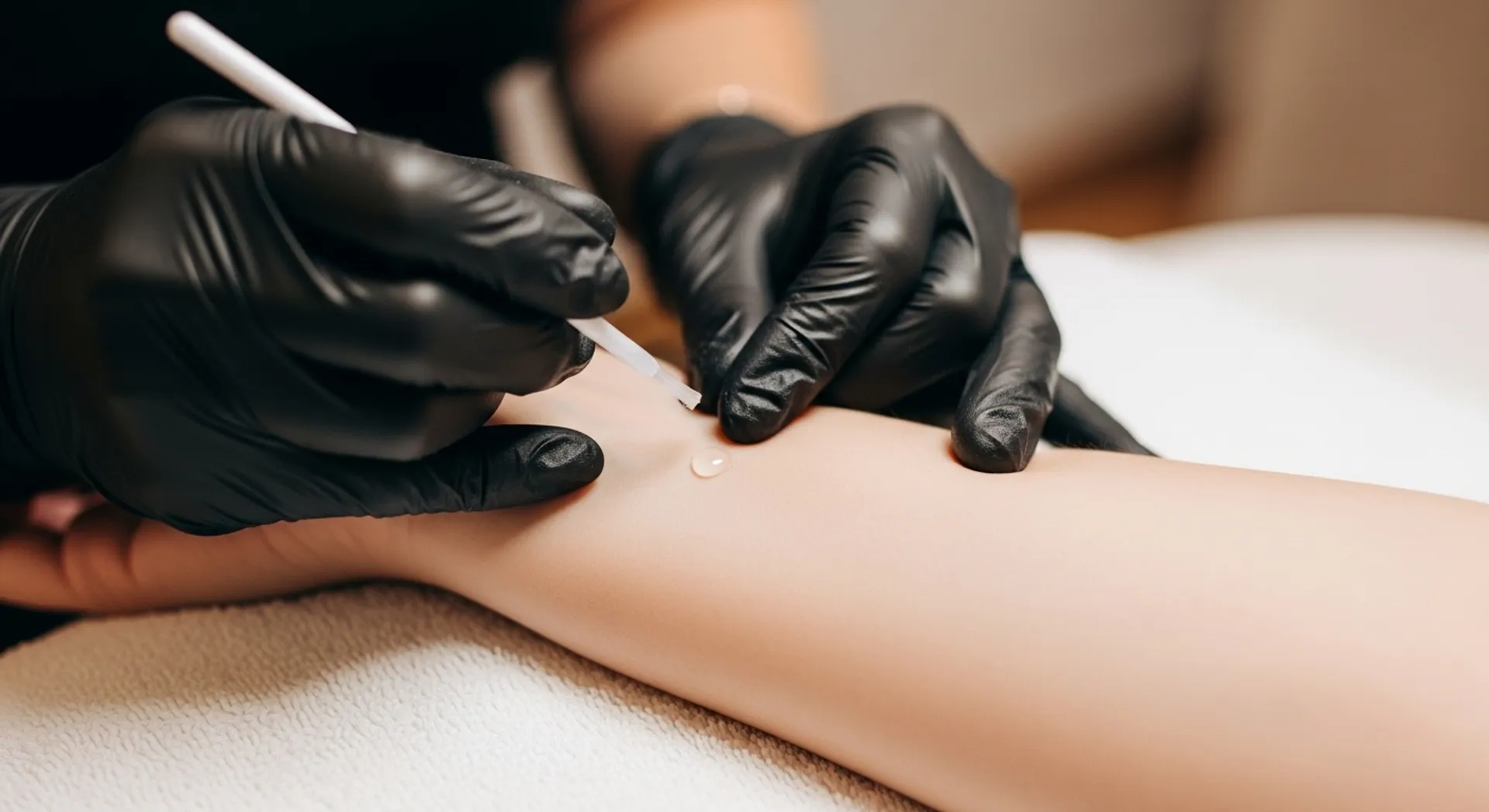Allergic reactions to lash extensions are a common concern for many individuals who opt for this popular beauty enhancement. These reactions primarily occur due to sensitivity to the adhesive used to attach synthetic lashes to natural ones. Cyanoacrylate, a key component in most lash glues, is often the main culprit behind these allergic responses. Symptoms can range from mild irritation and redness to more severe swelling and itching.
Prevention strategies are crucial in minimizing the risk of allergic reactions. Conducting patch tests before full application helps identify potential sensitivities, allowing you to choose suitable products or decide against the procedure if necessary. Using hypoallergenic adhesives with lower cyanoacrylate content can significantly reduce the likelihood of adverse reactions.
Awareness and preparedness are essential when dealing with allergic reactions. Knowing the symptoms and having a plan in place for immediate action can help manage any issues that arise quickly and effectively. This article will explore various causes, symptoms, prevention strategies, and solutions for allergic reactions to lash extensions, providing valuable insights for both clients and lash technicians alike.
Causes of Allergic Reactions to Lash Extensions

Role of Adhesives in Allergic Reactions
The adhesive used in lash extensions is the primary culprit behind most allergic reactions. The glue’s chemical composition can trigger sensitivity in many individuals, leading to discomfort and adverse symptoms.
Main Allergens in Lash Extension Glue
Key allergens found in lash extension glue include:
- Cyanoacrylate: This fast-drying adhesive is essential for bonding synthetic lashes to natural eyelashes. Unfortunately, it is also a common allergen that can cause swelling, redness, and itching.
- Carbon Black Pigment: Often added to glue for its dark color, carbon black pigment can provoke allergic reactions in some clients.
Other Contributing Components
Several other components can also contribute to allergic responses:
- Formaldehyde: Although not directly added to the glue, formaldehyde can form during the drying process. This compound is known for causing irritation and allergic reactions.
- Tape: Used during the application process to hold down lower lashes or protect the skin, tape adhesives can sometimes trigger skin sensitivities or allergies.
Understanding these causes helps identify and mitigate potential allergens during the lash extension process.
Symptoms of Allergic Reactions to Lash Extensions
Allergic reactions to lash extensions produce a range of symptoms that often develop rapidly, sometimes within minutes to a few hours after exposure. Recognizing these signs early can help prevent escalation and long-term discomfort.
Typical symptoms include:
- Swelling: Puffiness around the eyelids or under-eye area, sometimes severe enough to cause difficulty opening the eyes.
- Itching: Persistent or intense itching on the eyelid margin, lash line, or surrounding skin.
- Redness: The whites may appear bloodshot, and the skin around the lashes can become inflamed.
- Burning Sensation: A stinging or burning feeling on the eyelids or eyes themselves.
- Watery Eyes: Excessive tearing is not related to emotional response; it is often a reaction to irritation.
- Runny Nose: Nasal symptoms may occur if allergens spread or if the reaction is more systemic.
Symptoms often begin shortly after lash application. In most cases, discomfort appears within the first 24 hours. Some clients notice irritation while still at their appointment, while others develop symptoms later in the day as adhesives fully cure and fumes dissipate.
Severity varies from person to person:
- Mild reactions involve minor redness, slight swelling, or mild itching that resolves with basic care.
- Moderate cases may feature significant swelling, consistent burning sensations, and increased tearing.
- Severe reactions can involve swelling that closes the eye, intense pain, persistent redness, or even impaired vision. These cases require prompt action and medical evaluation.
In some instances, allergic reactions might lead to conditions such as allergic conjunctivitis, which necessitates immediate medical attention. Early identification of these symptoms sets the stage for effective prevention and immediate care during future appointments.
Prevention Strategies for Allergic Reactions to Lash Extensions
Preventing allergic reactions to lash extensions starts with taking proactive measures before the first lash is applied.
Here are two key strategies that can make a difference:

1. Patch Tests: The First Line of Defense
- A patch test involves applying a small amount of lash adhesive behind the ear or on the inner arm at least 24–48 hours prior to the full service.
- This simple step helps identify any immediate or delayed allergic response, reducing the risk of a serious reaction during or after the lash application.
- Clients who have never had extensions before, those with sensitive skin, or anyone with a history of allergies should always undergo a patch test.
2. Use of Sensitive or Hypoallergenic Adhesives
- Selecting adhesives specifically labeled as “sensitive” or “hypoallergenic” can significantly lower the likelihood of triggering an allergy.
- These products typically contain reduced levels of cyanoacrylate and are formulated without common irritants like carbon black pigment or added fragrance.
- Technicians should always review ingredient lists and choose glues designed for clients prone to sensitivities.
“A careful approach doesn’t just protect your client — it safeguards your reputation as a lash professional.”
In addition to these strategies, maintaining clean tools, using fresh glue for each application, and following strict hygiene standards are essential in minimizing risks. By implementing these foundational steps, both clients and technicians can enjoy safer and more comfortable lash extension experiences.
Proper Ventilation and Client Consultation in Preventing Allergic Reactions to Lash Extensions
Proper ventilation during the lash application process directly impacts client safety and comfort. Cyanoacrylate-based adhesives release fumes that can trigger irritation or allergic responses, especially in poorly ventilated spaces.
To reduce airborne allergen concentration:
- Operate fans or air purifiers in the treatment room to disperse fumes.
- Open windows when possible, allowing fresh air circulation.
- Use localized extraction systems, such as fume extractors positioned close to the working area.
- Consider anti-allergy gels placed near the client’s head, which help capture and neutralize adhesive vapors.
Attention to ventilation limits prolonged exposure for both clients and technicians, minimizing risk for everyone involved.
Client consultation for risk assessment is an essential step before beginning any lash extension service.
A thorough review should cover:
- Previous history of allergies — specifically reactions to adhesives, latex, or tape.
- Pre-existing eye conditions (blepharitis, conjunctivitis, dry eyes).
- Current medications that may affect immune response or healing.
- Recent illnesses or ongoing treatments impacting the immune system.
- Level of sensitivity reported with past beauty treatments.
Documenting these details helps identify high-risk individuals who might require alternative products or additional precautions. Open communication ensures expectations are clear and helps build trust between the technician and client.
Immediate Actions and Treatments for Allergic Reactions to Lash Extensions
When an allergic reaction to lash extensions occurs, it is crucial to act swiftly to alleviate discomfort and prevent further complications.
Here are the immediate steps you should take:
- Removal of Lash Extensions: The first and most important step is to remove the lash extensions as soon as possible. This can be done using a professional-grade adhesive remover or by seeking assistance from a certified lash technician.
- Cold Compresses: Applying cold compresses to the affected area can help reduce swelling and soothe irritation. Wrap ice in a clean cloth or use a cold gel pack and gently place it over your closed eyes for short intervals.
- Antihistamines: Over-the-counter antihistamines, such as Benadryl, can be taken to help manage the allergic response. These medications work by blocking histamine, the substance responsible for allergy symptoms like itching and swelling.
- Cortisone Creams: For localized inflammation and redness, applying cortisone creams can provide relief. Be sure to use these creams sparingly and follow the instructions on the label or those provided by a healthcare professional.
- Eye Drops: Lubricating eye drops or artificial tears can help alleviate dryness and irritation caused by the allergic reaction. Avoid using any drops that contain preservatives or other irritants.
Addressing these immediate actions promptly can significantly reduce discomfort and prevent worsening of symptoms.

When to Seek Medical Help for Severe Allergic Reactions to Lash Extensions
In some cases, allergic reactions to lash extensions can become more serious and require immediate medical attention.
Severe symptoms usually include:
- Intense swelling around the eyes or face
- Persistent redness and irritation that doesn’t improve with initial treatments
- Difficulty in opening or closing the eyelids due to swelling
- Severe pain or burning sensation in the eyes
- Blurred vision or other visual disturbances
- Breathing difficulties or signs of anaphylaxis, such as widespread hives and dizziness
When these severe symptoms occur, it is crucial to seek professional medical help without delay. An ophthalmologist or dermatologist can provide specialized care, including prescription medications such as corticosteroids or stronger antihistamines to reduce inflammation and allergic responses.
Ignoring severe allergic reactions can lead to complications such as infections or long-term damage to the delicate eye area. Medical professionals may also offer patch testing to identify specific allergens, helping clients avoid future reactions. Prioritizing timely medical intervention ensures that both the client’s health and their ability to safely enjoy lash extensions in the future are preserved.
Protective Measures for Lash Technicians Against Developing Sensitivities
Repeated exposure to lash extension adhesives and related products can put lash technicians at risk of developing sensitivities or occupational allergies. Even those without a history of allergic reactions may eventually experience symptoms such as respiratory irritation, skin rashes, or watery eyes after frequent contact with cyanoacrylate fumes and other chemicals.
Key protective measures for lash technicians against developing sensitivities include:
1. Wearing Personal Protective Equipment (PPE)
- Use of medical-grade masks (such as N95 or carbon filter masks) reduces inhalation of adhesive fumes.
- Nitrile or vinyl gloves protect hands from direct contact with glue and other irritants.
2. Optimal Ventilation Practices
- Install local exhaust ventilation systems and use extractor fans to help disperse fumes away from breathing zones.
- Keeping treatment rooms well-aired and using anti-allergy gels or fume absorbers can minimize airborne allergens.
3. Limiting Exposure Time
- Scheduling regular breaks between appointments gives air circulation systems time to clear out lingering vapors.
- Rotating tasks and staggering high-exposure procedures lowers cumulative risk.
4. Hygiene Protocols
- Washing hands thoroughly after each service session.
- Regular cleaning of work surfaces and tools prevents the buildup of allergenic residues.
Sensitization is not always immediate — symptoms can develop gradually after months or years in the profession. Early adoption of these strategies helps safeguard your long-term health while continuing to deliver high-quality lash services.
Conclusion
Preventing allergic reactions to lash extensions is essential. You can greatly reduce the risk of allergies by:
- Conducting thorough consultations
- Performing patch tests
- Using hypoallergenic adhesives
Additionally, proper ventilation and clean application practices protect both clients and technicians from potential sensitivities. These proactive measures not only improve client safety and comfort but also create a healthier working environment for lash technicians. By implementing these strategies, more people can enjoy the beauty of lash extensions without putting their health at risk.
